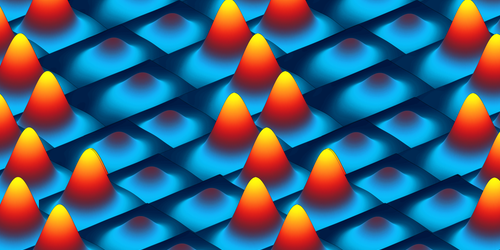Longer-Than-Expected Twirls for Polariton Condensates
Alexis Askitopoulos of the Skolkovo Institute of Science and Technology, Russia, and his colleagues were creating polariton condensates and watching how they decayed when they observed an odd behavior: under certain conditions, a given condensate’s coherence function—a measure of the system’s quantum state—periodically rose and fell on its journey to zero rather than decaying smoothly as expected. Now the team shows that this oscillatory pattern is due to a magnetic field induced by interpolariton interactions, which periodically revives a condensate’s coherence by causing the condensate to precess [1]. Askitopoulos says that the measurements highlight the quantum nature of polariton condensates.
Polaritons are quasiparticles that are created in semiconductor-based optical microcavities when there is strong coupling between the light and the cavity (see Focus: Polariton Laser Upgrade). Polariton condensates form when the density of the polaritons goes above a threshold and the quasiparticles coalesce. The condensate emits light, with the properties of this light depending on those of the condensate, a link Askitopoulos and his team used in their experiments.
For high-density condensates, the team observed a periodic beating in the system’s parameters, which they show comes from a precession of the condensate around an out-of-plane magnetic field that the condensate itself induces. The precession—and thus the condensate itself—persisted 6 orders of magnitude longer than the lifetime of an individual polariton particle, a finding that Askitopoulos says shows “very clearly that our polariton [condensate] is a collective quantum state and not merely a bundle of particles that share the same properties.” He says that the results indicate that polariton systems could be used to create new types of magnetometers.
–Katherine Wright
Katherine Wright is the Deputy Editor of Physics Magazine.
References
- H. Sigurdsson et al., “Persistent self-induced Larmor precession evidenced through periodic revivals of coherence,” Phys. Rev. Lett. 129, 155301 (2022).




